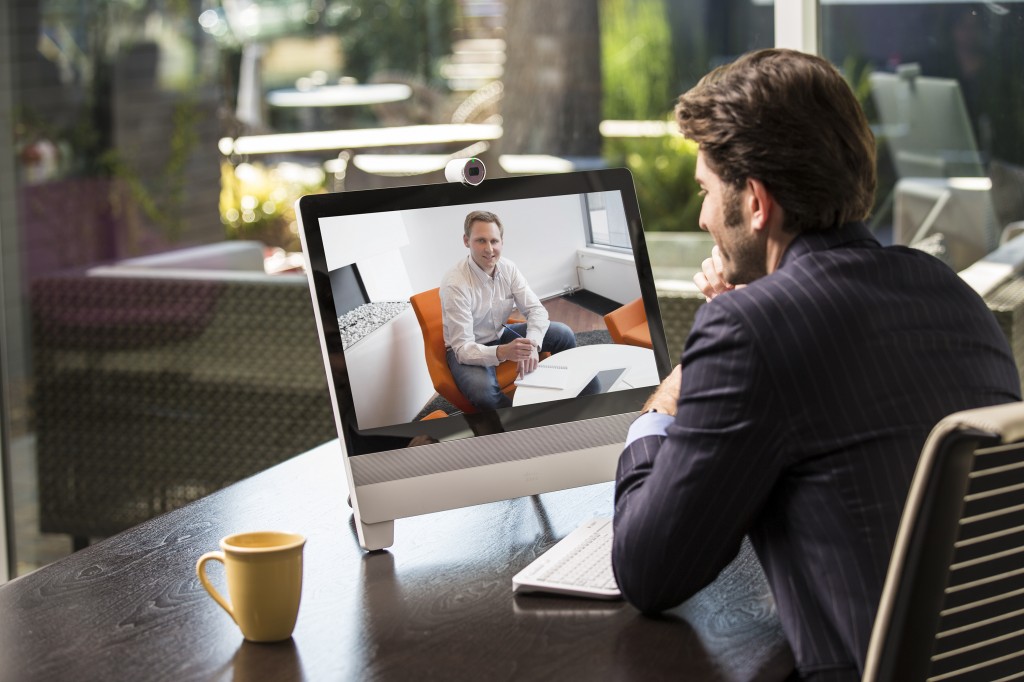Mental Health Services: Can Video Technology Save Patients & our NHS?

Staying mentally healthy is one of the biggest health challenges we face today. About a quarter of the UK population will experience mental health issues in the next year; illnesses of which relate to psychological, social and emotional well-being, rather than physical health, and that figure is on the rise – by 2030, it is estimated that an additional 2 million people in the UK will be suffering from a mental illness.
Poor mental health costs England alone approximately £105 billion per year, and receives 13% of the NHS budget – thought to be a major under spend, considering Mental Health accounts for 23% of total burden of disease in the UK. Even so, investment in mental health services have fallen for the past 3 years in a row.
It is also believed that only 23% of those with anxiety & depression illnesses, and only 65% of those with psychotic disorders currently seek treatment, although referrals to services continue to increase, year on year.
With a continually increasing demand for the provision of mental health services and an ongoing requirement to reduced expenditure in the NHS, this serious challenge is only going to grow. It is therefore more important now than ever for healthcare providers and the NHS to recognise and begin implementing the tools, technologies and solutions that improve the quality and delivery of care, whilst making efficiency savings that can be reinvested back into the NHS.
Increasingly, healthcare organisations are looking towards modern day digital technology to provide “telehealth” or “tele-mental health” services – a collection of services for improving the delivery of healthcare via telecommunication technology.
But telehealth services are nothing new; around the world, health services have been delivered remotely via a wide range of technologies for over half a decade – including via the radio, phone, email and internet. However improvements in real-time visual technology in more recent years, such as more sophisticated, better integrated and cheaper Video Conferencing and Video Collaboration tools, means that these solutions have become a much more attractive alternative for the delivery of mental health services. And research proves these visual communication technologies do not only improve patient outcomes but also reduce costs involved in providing the service to the public too.
Are the outcomes of Tele-mental health services as good as in-person services?
On all measures of clinical outcomes, studies show that tele-mental health service delivery is no less effective than face-to-face service delivery, with similar levels of improved mental health through video conducted clinical assessments, psychiatry, education and counselling as with in-person provision.
Despite many initial concerns, reports show that after using video conferencing technology for mental health services, both patients and clinicians feel comfortable and satisfied with the outcomes – patients have specifically stated that benefits of using the technology for them includes shorter waiting times, reduced travel times, a greater sense of personal control, the ability to remain in a comfortable environment and the reduced loss of work time amongst many more.
Even more promising, studies in mental health care provision for the military have shown significantly better attendance to appointments, meaning more people that need to receive care have access to, and make use of services that may have previously been too timely or costly to attend.
It is also believed that the average cost of tele-mental health services are 16% lower per visit than the equivalent face-to-face treatment, and traditional face-to-face psychiatric consultations for rural areas is four times the cost compared to consultations via video.
Why now?
Historically, video conferencing and collaboration technology proved difficult to use, costly and unreliable, with low quality video conferencing potentially causing reduced quality of relationships between the patient and clinician. Lack of understanding of the technology and lack of confidence has been reported to be one of the main barriers to adoption of telehealth services.
Professional Video Collaboration tools have moved leaps and bounds in terms of ease-of-use, cost and reliability over the past 5 years. Whereas quality may have been grainy and undefined, or slow networks caused video and audio to become out of sync or even stop working altogether, users of today’s network and endpoint technology very rarely report these issues. User interfaces are far more simplified, and controllers have become much more intuitive, with connectivity between professional technology and consumer technology, such as Skype or Google Hangouts, now possible, and as simple as opening a browser.
Available Solutions
All telemedicine solutions should be secure, high quality, simple to use and reliable. Different solutions and technology will be required by different clinicians and patients, which need to be provisioned based upon the workspace or room, the network, the features required and the connectivity to additional devices needed. With telemedicine solutions, it is also important to ensure that simple consumer technology – used by the general public – can connect with clinicians, whilst keeping the network and data secure.
Simple to use videophones can be the perfect alternative to computer software, especially for patients who may not be comfortable with using a PC. Desktop endpoints such as Cisco DX series systems or a Polycom RealPresence Group Convene can provide high quality audio, video and presentation/data sharing for clinicians desktops. For small huddle spaces and consultation rooms, high quality low-cost Video Conferencing endpoints such as Cisco SX endpoints or Lifesize Icon systems can enable rooms to be easily video enabled.
can provide high quality audio, video and presentation/data sharing for clinicians desktops. For small huddle spaces and consultation rooms, high quality low-cost Video Conferencing endpoints such as Cisco SX endpoints or Lifesize Icon systems can enable rooms to be easily video enabled.
With either a quality hosted service “in-the-middle”, such as VC365, Lifesize Cloud or Pexip (for a private cloud) or for some hospitals – who’s regulations and policies dictate keeping technology inhouse – , on-premise infrastructure such as Cisco CUCM or Polycom RealPresence Clariti provides secure connectivity and interoperability between systems and software, that is feature rich, reliable and simple.
Any telehealth solution being deployed should also take into account the need for long term support by experienced, accredited providers who can assist quickly and efficiently if a problem does arise, and can provide value-added services such as training, help with adoption, assistance with any software updates or just be able to answer questions from the clinicians or IT department as and when they need to.
Mental illness is one of the biggest challenges for UK healthcare today, but through the correct implementation of high quality visual collaboration technology, the correct training and correct long term support, services for psychotherapy, psychiatry, assessment and councelling, medication management, case management, education and supervision can greatly benefit. Research proves that today’s video conferencing and collaboration technology does not only improve patient outcomes but also greatly reduces costs involved in providing the services, and so for the challenges faced by the NHS today, provision of telehealth services should be at the forefront of every healthcare providers mind.
More Information?
- See our Healthcare Solutions
- See how Healthcare Administration is taking a new approach with Video Conferencing Technology
Or contact our team today to discuss how Video Collaboration tools can improve the provision of healthcare to your patients.




A good article and its incredible to think that it’s now over 8 years since VideoCentric first implemented a public cloud solution for NHS Mental Health Trusts, connecting 9 hospitals around the country with hosted multipoint conferencing and ISDN/PSTN gateway services for their Tandberg Cisco systems. Its still in place today but of course with guest Tablet, smartphone, Mac & WebRTC access too. Just in those days the term “cloud” hadn’t been invented.